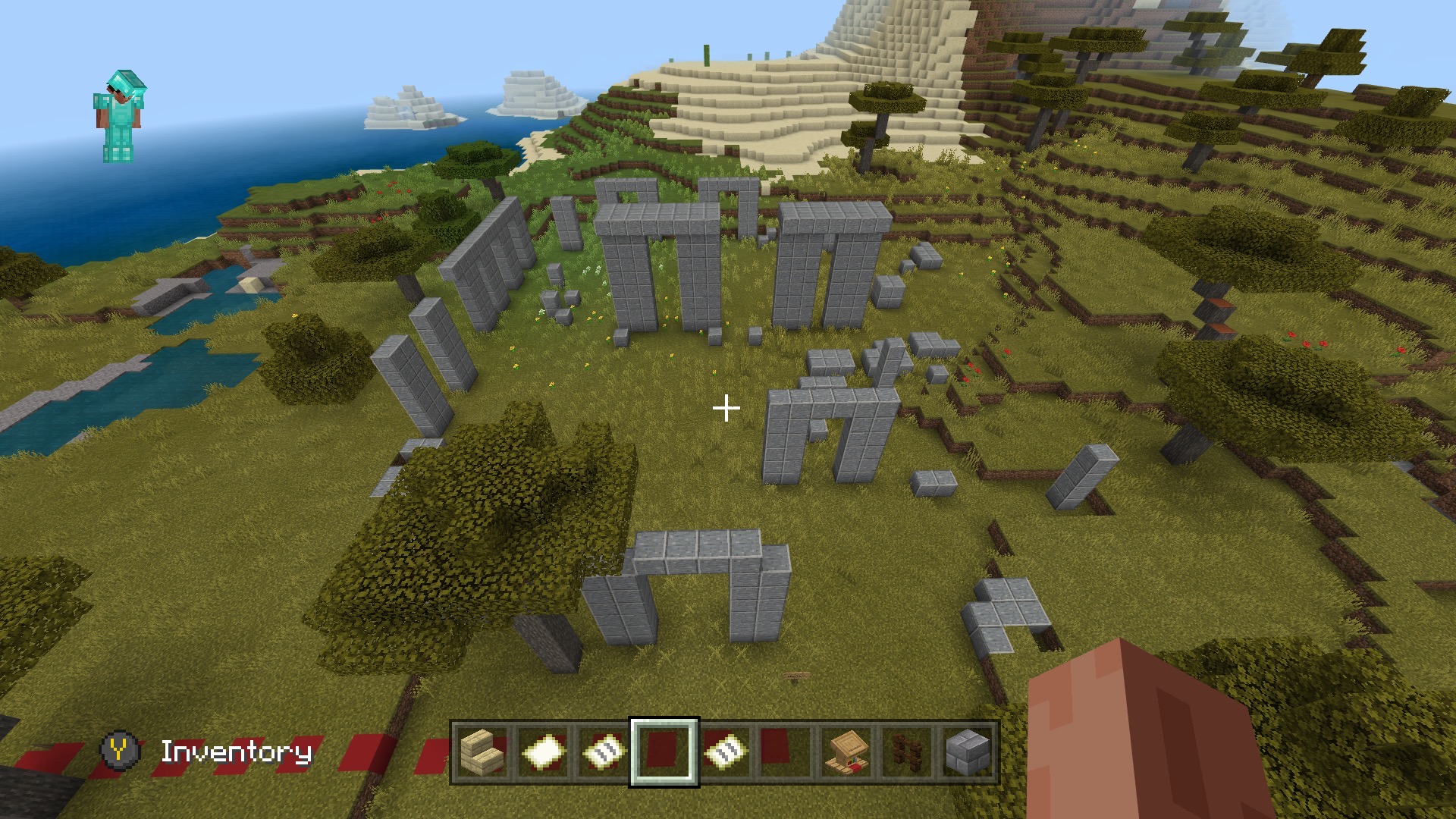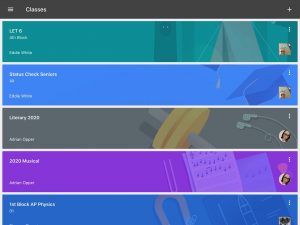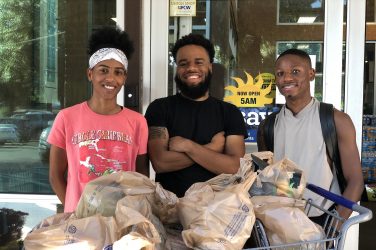Core classes like English or math translate relatively easily from classroom to computer. “Connection classes,” like art and band, require a little reworking in order to successfully make that transition.
Liberty County, Georgia, is experiencing these transitions with all of their courses due to the COVID-19 pandemic, and the county school system and its teachers are confronting challenges by taking advantage of apps that structure online learning as well as non-traditional methods like combing work and play.
Amanda Smith, an art teacher at Midway Middle School, has been experimenting with different assignments that her students at home can do without the need to spend extra money on art supplies.
“It’s not more difficult,” Smith said. “It’s more like I have to be more creative with what I do.”
Smith reached out to her students to see what art supplies they did and didn’t have and for ideas on how they would like to continue learning.
One solution that Smith came up with was teaching in Minecraft, a popular video game that gives players the opportunity to build things out of Lego-like blocks.
Smith made 13 pieces in all for her lesson on architecture in Minecraft. These included the Temple of Artemis, a Japanese pagoda and Stonehenge. (Photo Courtesy/Amanda Smith)
Smith also recreated the interiors of these pieces of architecture so they could be toured by her students. (Photos Courtesy/Amanda Smith)
Smith and her husband recreated monuments such as The Temple of Artemis and other pieces of architecture within Minecraft. For perspective, these were all built to scale based on the height of the player characters. Smith included history lessons for her students to read to give historical context to each piece.
“I have kids on every single day, and I just go in and see what they’re doing,” Smith said.
Smith’s students have also recreated different works of architecture within their Minecraft realm. (Photos Courtesy/Amanda Smith)
Students who are not using Minecraft complete assignments with what they can find around the house. Most recently, Smith has been teaching her students about the color wheel and color theory.
Smith’s students also participated in art lessons using the tools available at home. (Photos Courtesy/Amanda Smith)
Instead of going out to buy paints, Smith had her students find objects around their houses and organize them to make images based on the color theory of their choosing.
My sister, Gracie Byler, is a senior at Liberty County High School and plays the French horn in the school’s band program. She uses an online application called SmartMusic to log and record her practice time. Then, her band director can listen to and grade the assignments that she recorded. SmartMusic gives students the option to listen to and accompaniment of the parts of the other instruments while practicing.
Access to Technology
The Liberty County School System provides iPads for its students to use for class. For grades two through 12, the county has a one-to-one ratio of students to iPads. High school students are allowed to take their iPads home; however, students in grades two through eight leave them at school.
“We had a holiday right before the schools were closed,” said Cathy Lane, the IT and mass communications coordinator for the Liberty County School System. “And so [the younger students] had not taken their iPads home, and then we never could come back so they weren’t able to get them. So, although we have a one-to-one ration from approximately grades two through 12, our younger kids up to eighth grade don’t have their iPads with them, and we cannot get into the schools to give them to them.”
High schoolers have their iPads to do their work on, but the sequence of events that led to schools closing left many of Liberty County’s students without the tools necessary to continue their education. Elementary and middle schoolers must rely on the technology available to them in their homes.
Liberty County isn’t the only part of Georgia experiencing this problem. While most of Georgia’s counties ⏤ including Liberty County ⏤ have a high percentage of broadband internet connectivity, other more rural counties are not as developed.
Approximately 1,000 people of the 61,000 Liberty County residents do not have access to wired broadband internet in their homes. The students who fall within that thousand must do their schoolwork at a place that has public Wi-Fi. Students may park in their school parking lots (as long as they stay inside the car) to connect to the school’s Wi-Fi network; however, students without laptops or tablets will not be able to take advantage of this opportunity. This is a more difficult task for students in the rural and coastal regions of Liberty County as there are fewer places outside the home to access the internet.
Students without internet access and the technology needed to complete schoolwork online are mailed paper packets with assignments to do, but they do not have the accessibility of directly communicating with their teachers as students with access to technology and the internet.
Adaptive Teaching, Adaptive Learning
Teachers in Liberty County are using Google Classroom and apps like Canvas to give their students assignments. The Liberty County School System purchased the Google Suite apps so that their students would not have to buy or subscribe to other software suites like Microsoft Office.
Screenshots of Google Classroom on an iPad. (Photo Courtesy/Jere Pearson)
Screenshots of Canvas on an iPad. (Photo Courtesy/Jere Pearson)
Some teachers, including William Parker, an English teacher at Liberty County High School, were already using these apps in their classrooms.
“I like the idea of what they call flipping the classroom. That is, I can put things out there on Canvas for my students to do ahead of time, say, a video to watch or an article to read. And then they come to class and we can talk about it,” Parker said.
“Flipping the classroom” is a method of teaching in which students first learn about topics outside of class, so there is more time to analyze and apply those concepts with their teachers and fellow students.
It was easier for Parker and his students to transfer to online classes because they were already familiar with the programs, that there haven’t been difficulties migrating classes online.
“The difficult thing was not being able to see each other face to face,” Parker said. “I can’t meet with every student simultaneously like this, you know, whether you’re using Zoom or Google Meet, even a virtual class, which is better than no virtual class. It’s not the same as live.”
There are some elements of teaching in the classroom that are better than instructing exclusively online. The learning environments of students in online classes are different than in the classroom and they differ from student to student. These variables can make students more distracted during school time, whether it be family members in the background or notifications popping up on smartphones and tablets.
“It’s not easy to sit at home and focus,” Parker said. “You know, I don’t know what they’ve got going on at home: that they might have two or three little brothers and sisters running around or Xboxes across the room calling your name. You know, whatever it is there. There are a lot of distractions away from school that limit the amount of work people can do.”
The activities that we’re assigning are for enrichment and review, and they will not negatively impact the grade of a student. Now, they can positively impact,” said Lane.
There are also hurdles for teachers. Not all teachers previously used online learning tools as much as Parker before the switch to online classes, and some may not have used online tools at all.
For the teachers that are struggling, both in Liberty County and elsewhere, Parker said they should, “reach out to their peers. There are people ion every school who are tech geeks. They’re the ones who are already experimenting with this kind of stuff before everybody else was doing it.”
Not every school has the ability to provide training for these programs, especially considering how fast schools have had to pivot to teaching online. There are resources and communities online that teachers can take advantage of to learn more about the tool and apps they are getting acquainted with.
Educators in Georgia have had to find new instruction methods to teach online, including ways to factor in students without access to the technology or network connectivity to continue learning online. Georgia’s public schools have shifted to online classes due to the shelter-in-place rules. At the beginning of April, Gov. Brian Kemp ordered the closure of public schools for the remainder of the 2019-2020 school year. At this point, the Liberty County School System is still planning on returning to in-person classes in August.
Josiah Byler is a senior majoring in Journalism in the Grady College of Journalism and Mass Communication at the University of Georgia.
































Show Comments (1)